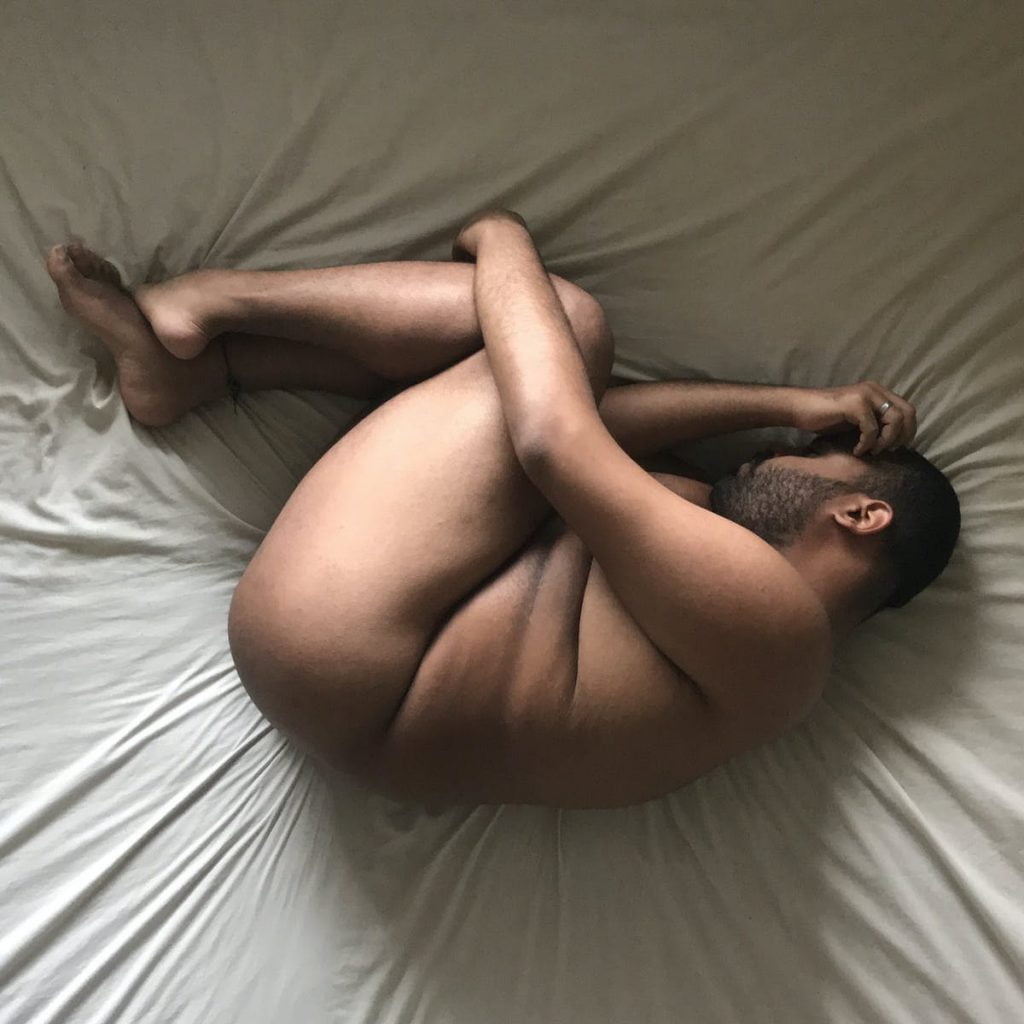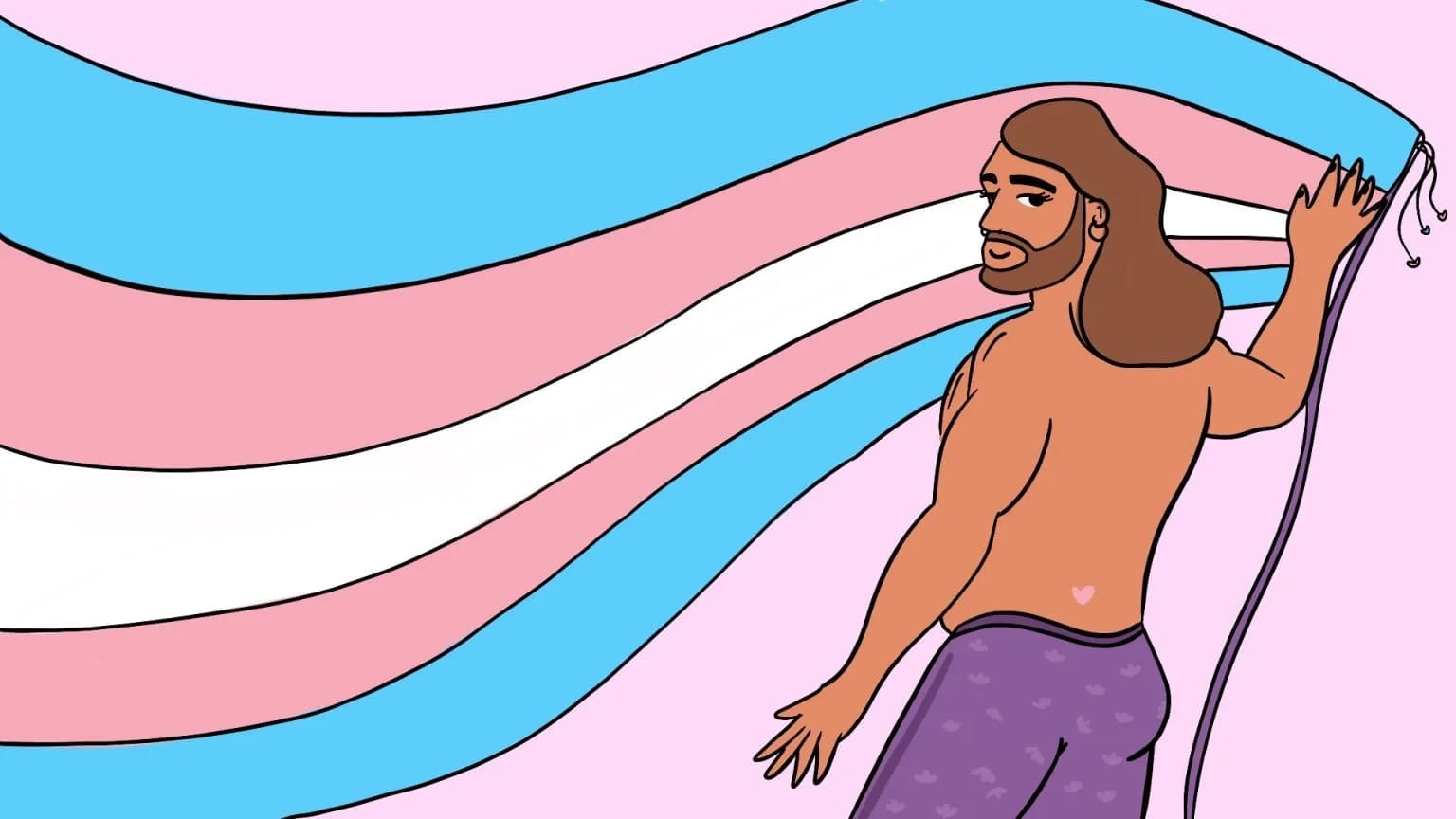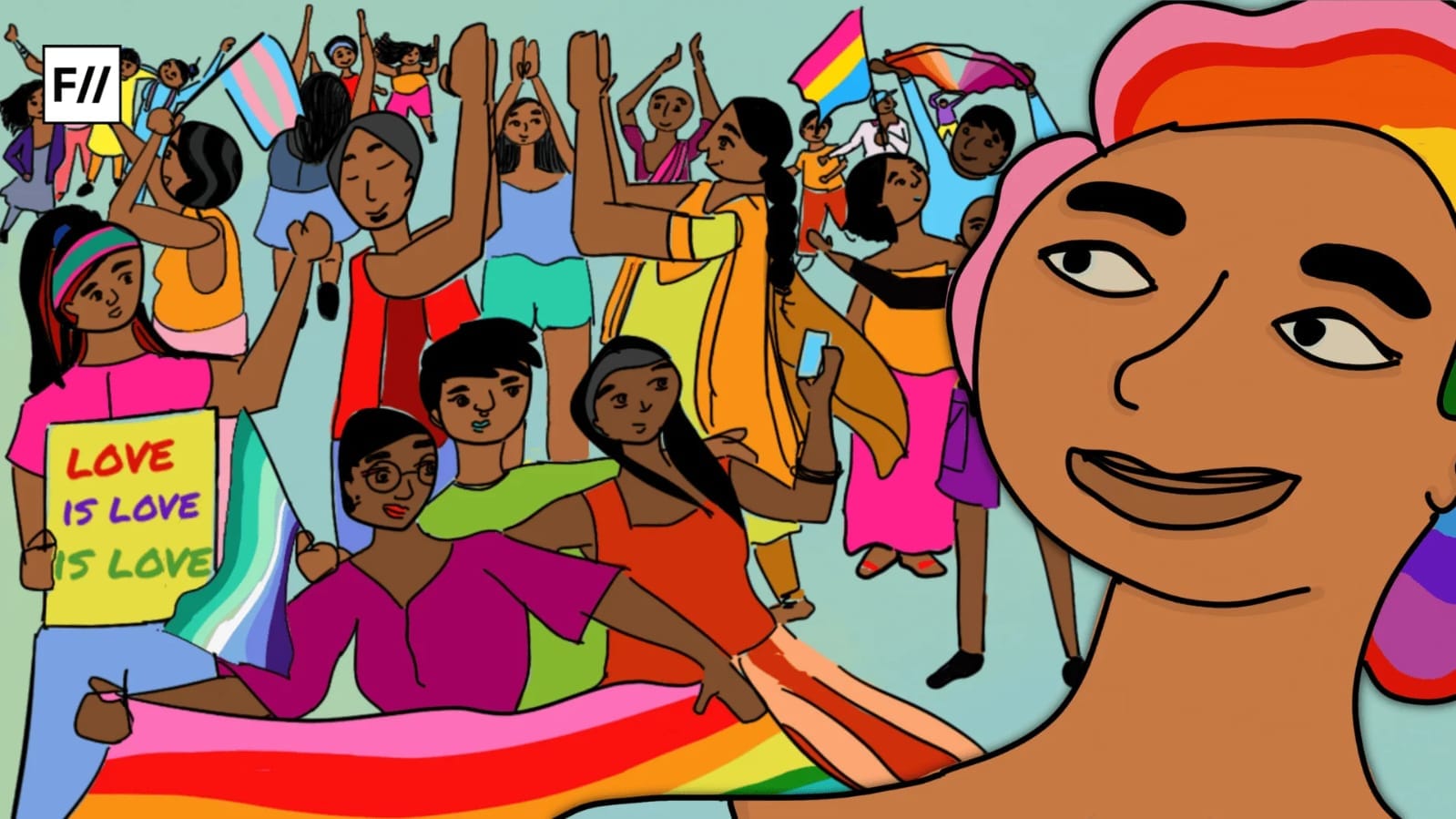Editor’s Note: This month, that is September 2020, FII’s #MoodOfTheMonth is Boys, Men and Masculinities, where we invite articles to highlight the different experiences of masculinity that manifest themselves in our everyday lives and have either challenged, subverted or even perpetuated traditional forms of ‘manliness’. If you’d like to share your article, email us at pragya@feminisminindia.com.
I began exploring my sexuality four years ago while studying abroad in Canada at a gay bathhouse in Toronto. I was young, chubby (I weighed 80 kilos), and new to the ‘gay scene’. Although I had no qualms about my body image despite being chubby, I distinctly remember well-intentioned strangers approaching me inside the bathhouse and telling me that although I looked cute, I should exercise at the gym if I ever wanted to find a partner. It was not one, not two, but three absolute strangers who told me this. I was enraged at their sheer audacity and refused to accept their advice. But a few weeks later, I did hit the gym.
Over the past four years, I’ve had a very complicated relationship with my body, and I’m not the only one. Ever since I moved back to India, my body image issues became worse. I noticed that even in India, Grindr (a popular dating app for queer men) was filled with queer men who had a fetish for the ‘toned, muscular body’. They wanted bodies that were lean and smooth, with perky nipples and a prominent chest. When asked to share my shirtless photos, I recall many men ghosting me after seeing my not-so chiseled body.

I slowly learned that if you are the dominant one in bed (the top), the size of your penis mattered. And if you were the submissive one (the bottom), the thickness of your buttocks did. I immediately began hitting the gym, pushing myself to work out harder, began consuming protein supplements—all so that I could look more desirable for others. I did more squats. Lifted more weights and tried to build my body. I received compliments from strangers on Grindr and met many interesting people on other hookup apps like Tinder as well, but my body image issues intensified.
I know I’m not the only queer man who, at some point in his life, was body shamed. Body shaming and body image issues are rampant in the Indian gay community and it worries me. To my knowledge, no scholarly research on this topic has been conducted in India yet, despite the existence of scholarly literature on queer men in the West. For instance, a 2019 exploratory study by Filice, Raffoul, Meyer, and Neiterman found that the popular gay dating app, Grindr did indeed affect users’ body image through three primary mechanisms: weight stigma, sexual objectification, and social comparison.
If we unpack each of these body-shaming mechanisms, we find that many instances of these exist within gay men and broadly the Indian gay community as well.
This is worrying, given that the LGBTQ+ community is already at a high risk of developing mental health issues owing to queerphobia and discrimination from outside the community. One can only imagine how worrying, stressful, and exhausting it must be put up so many appearances—both outside and inside the LGBTQ+ community—to maintain a seemingly perfect personal image.
Weight Stigma
Weight stigma, also known as weight bias or weight-based discrimination, is discrimination or stereotyping based on a person’s weight (NEDA). Those who regularly experience weight-based discrimination are at a high risk of developing eating disorders and falling into depression. In the upcoming December 2020 issue of Body Direct, a study demonstrated that bisexual and gay men did indeed report more weight self-stigma than heterosexual men, and this is not surprising.
Because back in 2011, another study found similar results in their phenomenological research of obese gay men in America. Most of the research participants reported that they experienced discriminatory treatment due to their body weight at some point in their lives and described being discriminated against and treated differently from their thinner peers. The covert and overt forms of discrimination took shape in the following ways: rude comments, rude looks, being talked to as though they were stupid, being ignored by peers, and being waited on in gay establishments, after their thinner peers.
I found this screenshot from Grindr floating around on Facebook and think it accurately describes what weight shaming looks like in the gay community today.

Sexual Objectification
Sexual objectification and over-sexualisation are hallmarks of gay life. In a recent study, it was found that the importance placed on appearance, involvement in the LGBTQ community, pornography use, and less restrictive affectionate behavior between men, were uniquely related to sexually objectifying other men. Also, older men were more likely than younger men to sexually objectify other men, and gay men were more likely than bisexual men to sexually objectify other men.
Fredrickson & Roberts’ (1997) objectification theory clearly states that being treated, evaluated, and used solely in a sexualised manner is a risk factor for negative psychological and mental health outcomes. This is worrying, given that the LGBTQ+ community is already at a high risk of developing mental health issues owing to queerphobia and discrimination from outside the community. One can only imagine how worrying, stressful, and exhausting it must be put up so many appearances—both outside and inside the LGBTQ+ community—to maintain a seemingly perfect personal image.

A 2018 study from Sydney shows that physical appearance plays an unusually important role among gay and bisexual men, and a failure to measure up to the fit, masculine ideal, can be a dealbreaker. Clinton Power, a relationship counselor associated with the Sydney LGBT community, said the study reflected some of his observations, “Gay and bi men do seem to be more fixated on finding a partner who is fit or physically attractive” than straight men and women, he said.
Social Comparison
The superficiality underlying gay culture in the West is well documented. Queer Eye’s Antoni Porowski recently opened up about his struggles with body image issues in an interview with Glamour Magazine,
“I was most comfortable with my body when I was in a relationship with women. There wasn’t a sense of comparison because we were different,” he said. “It was my first relationship with a guy where I looked at myself and I was like, ‘oh my biceps aren’t as big as his, I wish my legs were longer, I wish my torso was longer.’ I got really self-conscious and it was the comparison. I’m hard on myself about my body.”

The issue of social comparison in India is further complicated when one factors in issues such as caste, class, and tribal status. For instance, DNA India’s 2018 piece on Dalit, queer woman Bharati Torne highlighted how one person’s queer and caste identity both intersected to triply marginalise her. Both in India, and the West, the LGBTQ+ movement has been criticised for being elitist; hijacked by upper-caste cis-gay men in India and white cis-gay men in the West, and this superior-subordinate relationship based on race and caste also finds its way onto dating apps.
The issue of social comparison in India is further complicated when one factors in issues such as caste, class, and tribal status. For instance, DNA India’s 2018 piece on Dalit, queer woman Bharati Torne highlighted how one person’s queer and caste identity both intersected to doubly marginalise her. Both in India, and the west, the LGBTQ+ movement has been criticised for being elitist; hijacked by upper-caste cis-gay men in India and white cis-gay men in the west, and this superior-subordinate relationship based on race and caste also finds its way onto dating apps.
Gautam Gayan’s piece in Provoke Lifestyle highlights this toxicity. He argues that it is not uncommon for people on Grindr to ask about religion, caste, dietary preferences, and sometimes even if the other person has a girl of marriageable age at home! It is shocking and worrying to see what ‘gay culture’ in India has been reduced to.
Also read: “Am I Enough?” I Am Enough! — Body Imagery And Disability
A Way Forward
As I see it, the gay community in India faces two forms of challenges. One set that is external and another that is internal to the community. The external challenges include (but are not limited to) homophobia, physical and psychological violence due to non-acceptance, social stigma, shame, and ostracisation from family and society. Despite the Supreme Court’s historic IPC 377 judgment, India still is a conservative society where coming out of the closet is still a privilege not many can afford.
The internal struggles that plague the gay community include dealing with internalised homophobia, femmephobia, transphobia, body shaming, and body image issues. In this piece, I’ve only focused on body image issues, however, the other issues are also important and merit discussions of their own. It’s unfortunate that the same community that fights for acceptance from others often has difficulty accepting its own people. Superficial features like penis size, chest size, chiseled looks, and a toned body trump more important human features like ethical behavior, integrity, kindness, and empathy. Sadly, dating apps like Tinder and Grindr are designed to encourage queer men to seek love and not lust and not much is being to challenge that.

Vox reported in 2018 that the gay community’s obsession with sex and hookups on Grindr led to adverse mental health effects despite being an extremely popular app among gay men. Zach Rawlings from Vice coined the term intra-minority stress to denote the negativity he faced within the community. Ben Fetzner, who worked as a research associate at Yale University LGBTQ+ mental health professor John Pachankis’ lab called it the unfortunate “cost of being queer”. If one failed to live up to the socioeconomic pressures associated with being queer, one wouldn’t find acceptance within the community, let alone outside of it. This issue exists among queer women as well, even though it hasn’t been researched enough.

As members and allies of the LGBTQ+ community, its important for all of us to recognise our shortcomings, take stock of the psychological and mental violence we inflict on others while body shaming and status shaming people, and finally, learn to apologise. Changing old habits is hard, but not impossible. After all, the Indian LGBTQ+ community fought hard against a colonial-era law and managed to successfully strike it down.
Why can’t the same community fight against body shaming and weight discrimination within its own ranks as well?
Also read: How These Artists Are Addressing Body Image Issues In The Lockdown
References
- Differences in weight stigma between gay, bisexual, and heterosexual men. Body Image, 35, 30-40.
- The influence of Grindr, a geosocial networking application, on body image in gay, bisexual and other men who have sex with men: An exploratory study. Body image, 31, 59-70.
- Objectification theory: Toward understanding women’s lived experiences and mental health risks. Psychology of Women Quarterly, 21, 173–206.
- The lived experiences of obese gay men with weight stigma within the homosexual community: A phenomenological study (Doctoral dissertation, Capella University).
- Predictors of sexual minority men’s sexual objectification of other men. Journal of Social and Personal Relationships, 36(11-12), 3631-3650.
Featured Image Source: Tumblr
About the author(s)
Kanav is a postgraduate from Azim Premji University, Bangalore. He identifies as queer for personal and political reasons. All views are personal.





The article is insightful and thought provoking. It’s true that the patriarchal ideology imbuing toxic hyper masculinity creates a rigid act like man box in which the queer bodies are sculpted in the similar vogue, propagating an idealised norms of who is fitting in the box demarcating the boundary of self versus alterity. Perusing your article also made me ponder on the sextortion problems going in toto with body shaming. I remember one eye opening article on epidemic of gay loneliness written by Micheal Hobbes talking on the same essence that how the seamless deconstruction and reconstruction of choice, preference and the implicit discrimination takes a toll in the psyche of the queer man in which he ends up in different form of mental issues of absolute loneliness, alienation and depression. What we actually fail to understand is valuing our self worth since we are incorrigible and we prefer to get ourself validated by the lens of other, henceforth breaking our vital inner being. The therapy helps but it gives a temporary efficacious effect as we go back into the space of shaming and perpetual diatribe.